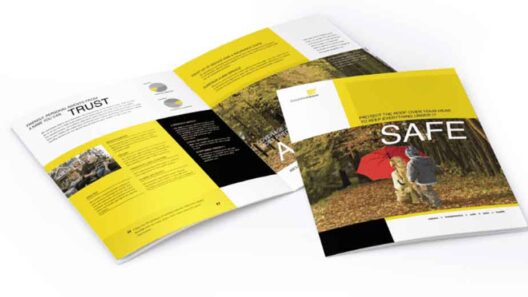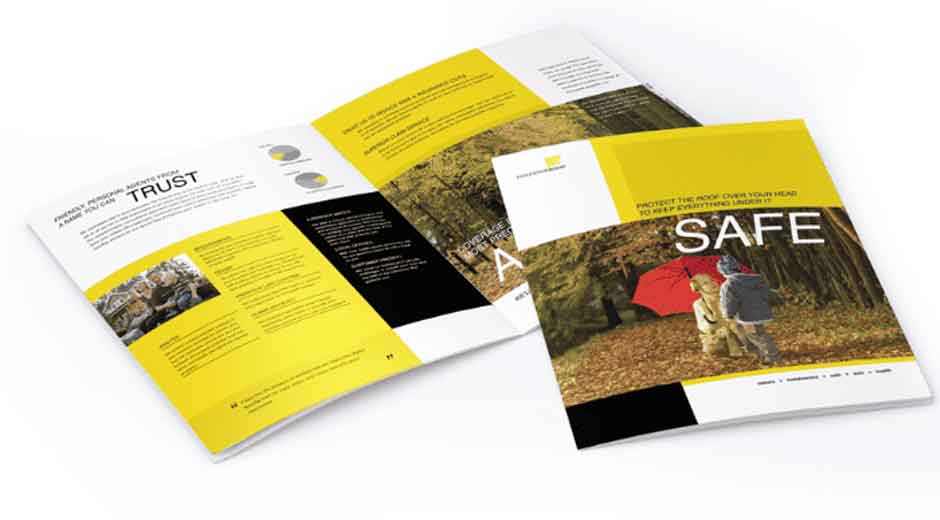Booklets allow you to share printed items, including books, manuals, direct mail, and promotional materials. You can choose between saddle stitching or wire binding, or opt for thicker stocks, such as cardboard. Booklet printing shops also let you add contact card inserts and other custom sections. Here are a few tips to help you create informative, attractive booklets:
Choose Your Printing Material
The material used for printing directly impacts the quality and durability of your booklet. Selecting the right material allows you to create a professional, long-lasting booklet. Print shops offer a wide variety of paper stocks to suit different booklet types, so you can choose thick, glossy paper or matte options. Glossy stocks enhance image sharpness, making them ideal for booklets with vibrant color, while matte paper is more elegant and non-reflective. This makes it best for text-heavy books.
Consult reputable booklet printing shops to help you choose the right paper weight and balance, durability, and flexibility. You may select coated stock if you prefer wear-resistant promotional materials designed for high-traffic use. Uncoated stocks offer a softer, natural feel suitable for manuals and note-friendly booklets. Proper material selection allows you to produce user-friendly prints that align with the presentation, handling, and booklet lifespan.
Select a Binding Option
Saddle-stitching is a great option for small, lightweight booklets with a limited number of pages. You can also use binding methods such as perfect binding, loop stitching, or wire, plastic, and comb binding. Saddle stitching involves using standard saddle staples that punch through the sheets of paper. The weight and thickness of the paper determine how many pages you may saddle stitch. Use this option for smaller brochures, event programs, and short reports to keep the pages flat and cover closed. Perfect binding involves gluing the papers to a taped spine, which allows more pages and produces a clean, professional, and polished look.
Loop stitching uses a bookbinding thread to finish the booklets, producing a similar look to saddle-stitched publications. The technique is ideal for small to medium-sized booklets. Wire, plastic, and comb binding are often used with thicker cardstock or paper and are suitable for small to medium booklets, depending on the thickness of the pages. Other options, like spiral binding, suit manuals, workbooks, and guides that need to lie flat when opening.
Use Suitable Printing Techniques
Choosing the right printing technique allows you to produce high-quality text and professional and images. The printing technique you select depends on your project’s size, quality requirements, and timeline. Print shops use various techniques, including digital printing for short runs and fast turnaround on projects. Digital printing is also ideal for small-batch booklets that involve quick setups. You can also choose offset, full-color, black-and-white, and spot-color printing.
Offset printing suits high-volume projects that require consistent, high-quality color accuracy and sharp image reproduction. Large-scale booklet publishers often use it as the standard printing method because of the superior color accuracy. Print shops also offer specialty finishes like UV coating, lamination, embossing, and foil stamping, which help deliver durable, premium booklets. You may add unique textures or metallic accents that glow in the dark to make your covers stand out.
Seek Professional Design Support
Expert design services elevate your booklets to professional-grade publications that meet your needs. Print shops offer print-ready design templates and layouts that simplify the booklet creation process, saving you time. You can benefit from file preparation guidance with standard bleed, margins, and color settings. Print shops also provide proofreading services to correct grammatical errors that make your booklet look unprofessional.
Having professional help minimizes errors, resulting in content without cut-offs and misalignment that undermines your messaging. You may customize the size, folding, and finish, based on your needs. Print shops offer soft-touch or textured coatings with high-gloss or matte finishes. They have quality control measures throughout the printing and binding process to deliver high quality. You can also request a sample to adjust the layout or design before the final printing.
Find a Booklet Printing Shop Today
Creating professional, informative, and visually appealing booklets requires experienced print shops and design experts. Your content and images may be great, but that isn’t enough if you don’t choose the right paper, printing technique, and binding. Speak to a print shop today to find out more about professional booklet printing.













